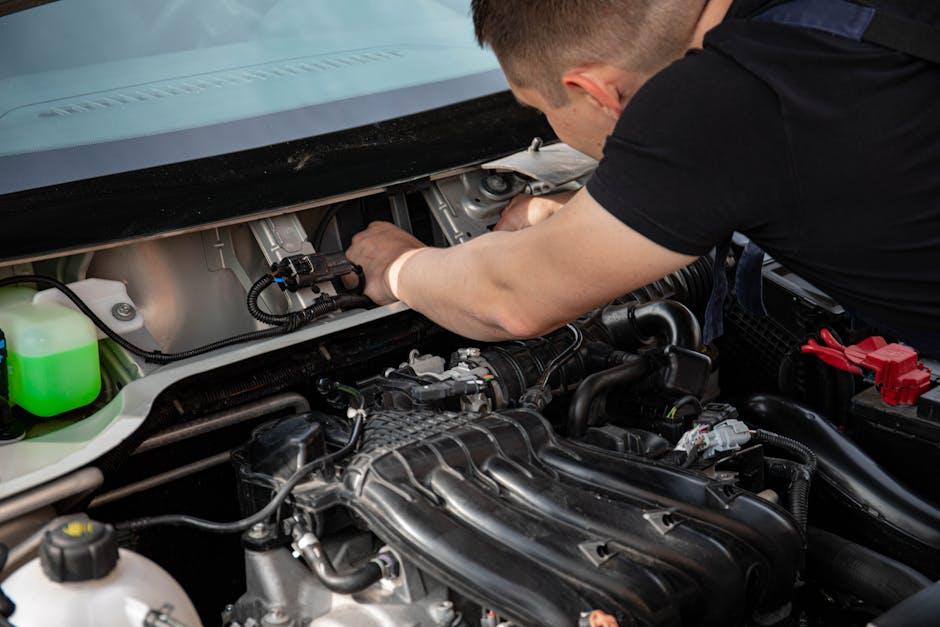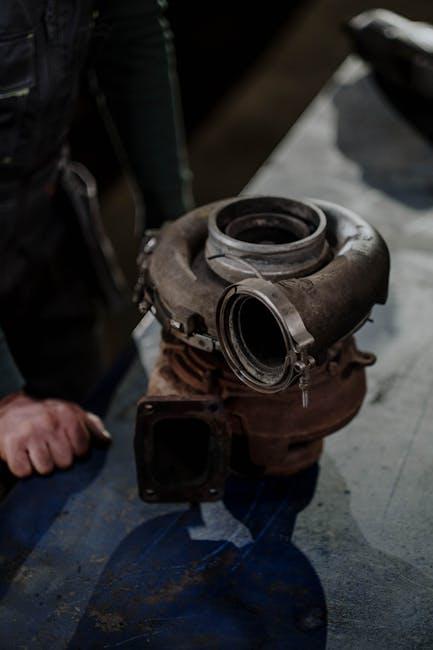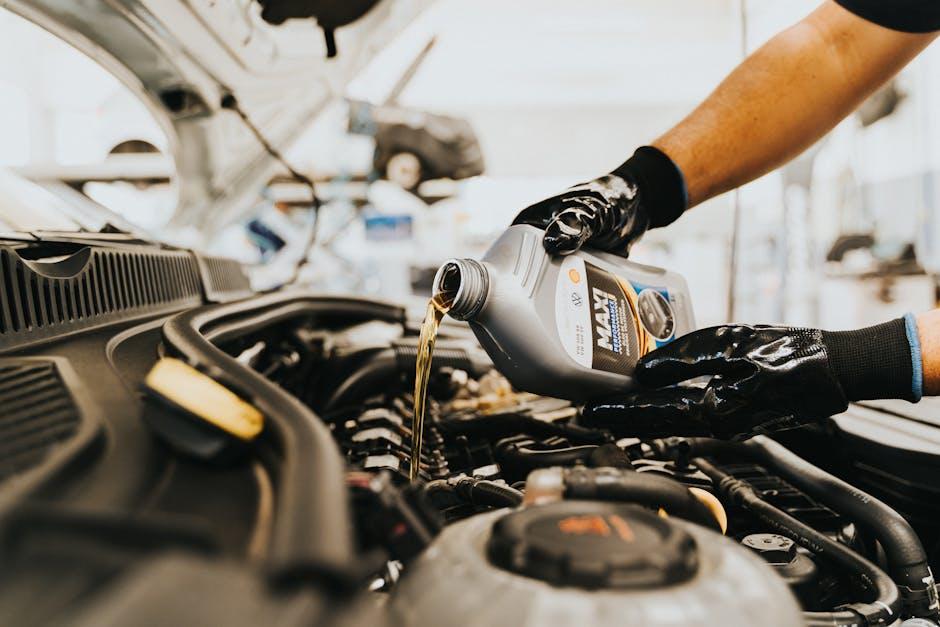Engine oil leaks are the silent culprits lurking beneath your automotive, quietly dripping away not simply treasured lubricant but in addition your peace of thoughts. They will begin as a faint trickle and shortly escalate right into a expensive and messy downside if left unattended. On this information, we’ll dive into the sensible steps to establish, diagnose, and repair engine oil leaks—empowering you to cease the drip earlier than it turns right into a flood. Whether or not you’re a seasoned gearhead or a curious DIYer, understanding the ins and outs of oil leaks can prevent time, cash, and the frustration of sudden breakdowns. Let’s get your engine working easily and leak-free as soon as once more.
Desk of Contents
- Understanding Widespread Causes of Engine Oil Leaks
- Figuring out the Supply of the Drip with Easy Inspection Strategies
- Important Instruments and Supplies for Efficient Oil Leak Restore
- Step-by-Step Procedures to Seal and Forestall Future Leaks
- In Retrospect

Understanding Widespread Causes of Engine Oil Leaks
Engine oil leaks usually come up from a handful of normal suspects which are straightforward to miss however considerably affect your automobile’s efficiency and cleanliness. One of many main causes is the deterioration of gaskets and seals over time. These elements are designed to maintain oil strictly inside engine boundaries, however warmth cycles and put on could cause them to harden, crack, or deform, resulting in inevitable seepage. One other frequent contributor is the unfastened or broken oil drain plug—a component usually disturbed throughout oil modifications that, if not tightened correctly, turns into a direct path for oil to flee.
Past these acquainted points, clogged or broken PCV valves can improve stress contained in the engine, forcing oil out via weak factors. Equally, defective oil filters that are not seated accurately, or have worn-out seals, can leak oil quickly. Right here’s a fast abstract that can assist you pinpoint potential hassle spots:
| Trigger | Widespread Symptom | Fast Repair |
|---|---|---|
| Worn Gaskets/Seals | Oil pooling round valve covers or oil pan | Change gasket/seal |
| Unfastened Drain Plug | Drips beneath engine after oil change | Tighten or substitute plug |
| Clogged PCV Valve | Extreme oil blow-by or smoke | Clear/substitute valve |
| Defective Oil Filter | Oil spots close to filter space | Reseat or substitute filter |

Figuring out the Supply of the Drip with Easy Inspection Strategies
Finding the precise spot the place your engine oil is leaking can really feel like a thriller, however armed with just a few easy strategies, you’ll be able to uncover the perpetrator with no need costly instruments. Begin by cleansing the engine floor to take away previous grime and oil residue, as recent leaks are simpler to identify on a clear canvas. With the engine cool, use a flashlight to look at widespread leak zones such because the valve cowl gasket, oil pan gasket, and drain plug. Take note of recent oil marks or shiny moist areas that distinction with the oily movie from earlier leaks.
For a extra systematic strategy, think about these fast inspection suggestions:
- Use UV dye: Add a fluorescent dye to your engine oil and run the engine briefly. Beneath a UV mild, the dye will glow brightly on the leak supply.
- Examine round seals and gaskets: These are typical weak spots within the engine’s protection towards leaks.
- Observe oil stage consistency: Speedy drops might counsel a big leak that requires pressing consideration.
| Inspection Spot | Leak Indicator | Urgency Stage |
|---|---|---|
| Valve Cowl Gasket | Recent oil seeping or wetness across the seal | Reasonable |
| Oil Pan Gasket | Oil dripping from backside of the engine | Excessive |
| Drain Plug | Oil puddles immediately beneath the plug | Excessive |
| Camshaft Seal | Oil accumulation across the camshaft space | Reasonable |

Important Instruments and Supplies for Efficient Oil Leak Restore
To deal with an oil leak effectively, having the appropriate instruments and supplies at hand is essential. Begin with a strong socket wrench set, which lets you take away tight bolts with out trouble. A top quality oil catch pan is equally important, serving to to comprise spills and preserve your workspace clear. Do not forget a jack and durable jack stands—security first if you raise the automobile to entry undercarriage elements. Important equipment like store rags, gloves, and screwdrivers support in cleansing surfaces and eradicating smaller fasteners with ease.
Relating to sealing and substitute elements, top off on objects like oil-resistant gaskets and rubber seals tailor-made to your engine mannequin. Utilizing the right engine oil, primarily based on producer suggestions, ensures the system stays lubricated correctly after the restore. Moreover, a torque wrench is indispensable for tightening bolts to precise specs, stopping future leaks brought on by overtightening or loosening. Under is a fast reference to the must-have necessities for seamless workflow:
| Device / Materials | Goal |
|---|---|
| Socket Wrench Set | Take away and tighten engine bolts |
| Oil Catch Pan | Accumulate leaking or drained oil |
| Jack and Jack Stands | Safely elevate automobile for entry |
| Oil-Resistant Gaskets | Change broken seals |
| Torque Wrench | Apply correct bolt rigidity |

Step-by-Step Procedures to Seal and Forestall Future Leaks
Start by totally cleansing the engine’s floor utilizing a degreaser and a scrub brush to take away all oil deposits and dust, which may intrude with a correct seal. Subsequent, examine gasket and seal areas for cracks or put on utilizing a vibrant flashlight; substitute any broken elements with OEM elements for optimum match and sturdiness. When making use of the sealant or changing gaskets, make sure the engine is cool to keep away from burns and to permit the sealant to remedy correctly. Tighten bolts in a criss-cross sample to distribute stress evenly, stopping uneven seals or future leaks.
To keep up a leak-free engine, frequently verify oil ranges and monitor for drip indicators beneath your automobile. Think about making a upkeep calendar that features oil change intervals and seal inspections to catch potential points early. Here is a fast reference desk for widespread engine elements susceptible to leaks:
| Part | Widespread Leak Trigger | Prevention Tip |
|---|---|---|
| Valve Cowl Gasket | Worn gasket materials | Change each 50,000 miles |
| Oil Pan | Broken pan bolts | Torque bolts to manufacturing unit specs |
| Entrance/Rear Primary Seal | Aged rubber seals | Examine throughout timing belt service |
In Retrospect
Whether or not you’re a seasoned mechanic or a weekend warrior, tackling that pesky oil drip doesn’t need to be a draining ordeal. With the appropriate instruments, a little bit of endurance, and the know-how shared on this information, you’ll be able to preserve your engine working cleaner and leak-free. Keep in mind, each drop you cease not solely protects your automobile but in addition helps protect the atmosphere. So roll up your sleeves, dive beneath the hood, and put an finish to these undesirable drips—your engine will thanks.



